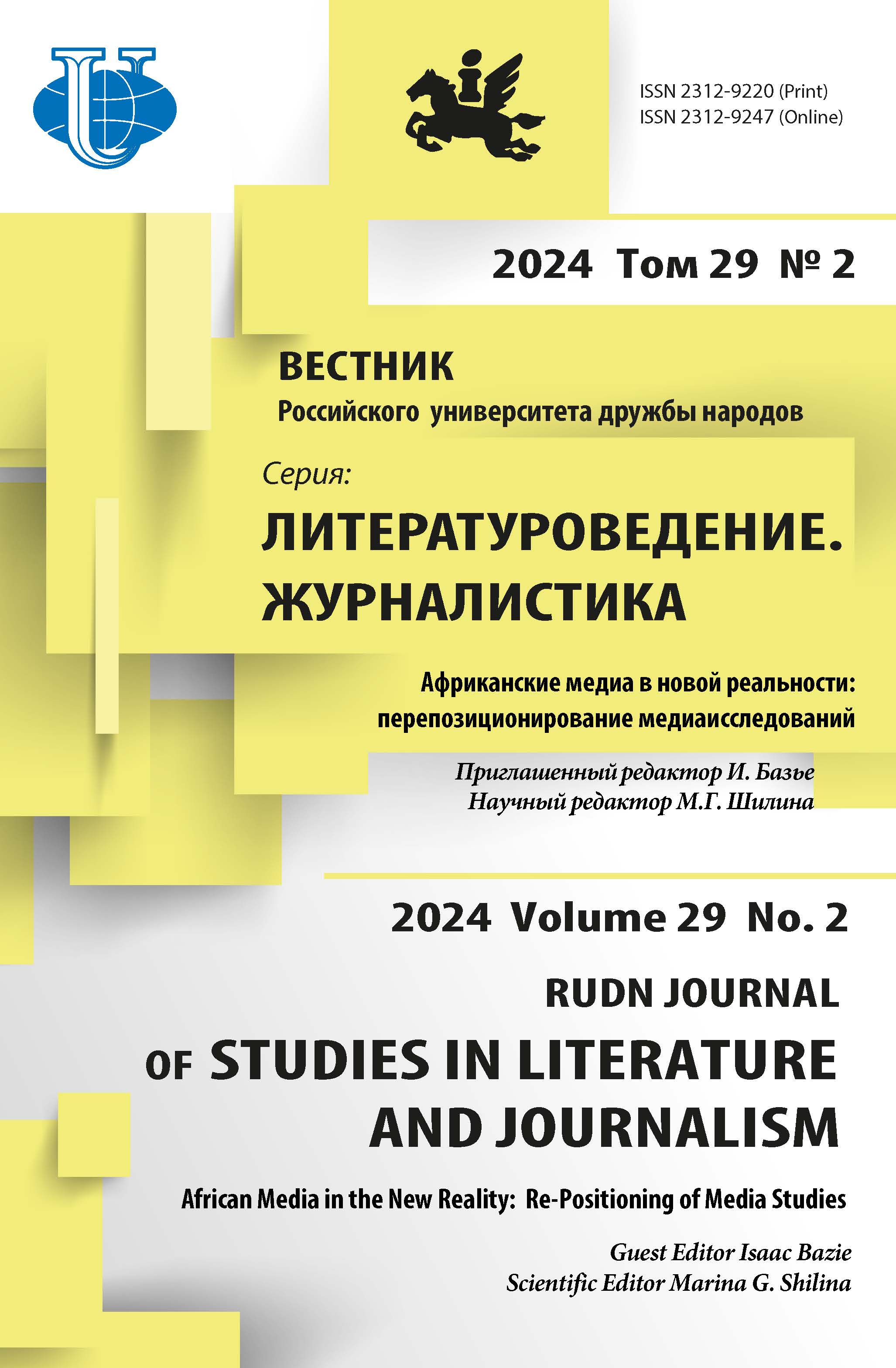Clip thinking of generation Z: methods of developing students’ creative potential
- Authors: Bukharbaeva A.R.1, Sergeeva L.V.1
-
Affiliations:
- Russian Presidential Academy of National Economy and Public Administration
- Issue: Vol 25, No 4 (2020)
- Pages: 787-796
- Section: JOURNALISM
- URL: https://journals.rudn.ru/literary-criticism/article/view/25463
- DOI: https://doi.org/10.22363/2312-9220-2020-25-4-787-796
Cite item
Full Text
Abstract
The article is devoted to actual problem of clip thinking of generation Z. The goal of research is to determine the most effective methods of working with clip thinking taking into account the peculiarities of information perception by modern students. It covers phenomenon of clip thinking, its characteristics and origins. Positive and negative features of clip thinking are highlighted, as well as effective methods of university educational process applying having the trend of clip-based consumption of info by students. The authors conclude that clip thinking is a natural process: it is necessary to work competently with this phenomenon of generation Z. It’s shown, that vast selection of digital tools is changing lifestyle of young generation, but multitasking, responsiveness, high degree of adaptability characterize modern students. The authors concluded that it’s necessary to form students' analytical and conceptual thinking in combination with clip thinking. It’s not worth changing students or fight against clip thinking as well as to act according to old methodology of educational process. Modern students need in interesting cases of thinking efficiency, multitasking that requires active action. Specificity of case method application of teaching was substantiated empirically (including observation, experiment, survey), it develops creativity, increases the level of analytical and critical thinking, allows to work with a large amount of information, helps to study proposed business situations, analyzes data and make the respective decision. It’s important to practice educational and search methods in a dialogue mode of learning process, construct situations, interactivity, mobility, frequent changes, multitasking. Clip thinking should be managed competently, by using its positive characteristics and preparing effective studying programs engaging relevant online and offline technologies.
About the authors
Asiya R. Bukharbaeva
Russian Presidential Academy of National Economy and Public Administration
Author for correspondence.
Email: asiya.bukharbaeva@gmail.com
PhD in Political Sciences, Associate Professor at the Chair of Integrated Communications
82 Vernadskii Ave, Moscow, 119571, Russian FederationLyudmila V. Sergeeva
Russian Presidential Academy of National Economy and Public Administration
Email: lu.sergeeva1@gmail.com
senior lecturer at the Chair of Integrated Communications
82 Vernadskii Ave, Moscow, 119571, Russian FederationReferences
- Mol, A. (1973). Sociodinamika kul'tury [Sociodynamics of culture]. Moscow, Progress Publ. (In Russ.)
- Toffler, E. (2002). Shok budushhego [Future Shock]. Moscow, AST Publ. (In Russ.)
- Frumkin, K.G. (2010). Klipovoe myshlenie i sud'ba linejnogo teksta [Clip thinking and the fate of linear text]. Topos. Retrieved August 15, 2020, from http://www.topos.ru/ article/7371 (In Russ.)
- Kara-Murza, S.G. (2004). Manipuljacija soznaniem [Manipulation of consciousness]. Moscow, Eksmo Publ. (In Russ.)
- Sapa, A.V. (2014). Pokolenie Z – pokolenie epohi FGOS [Generation Z – generation of FGOS era]. Innovacionnye proekty i programmy v obrazovanii [Innovative projects and programs in education], (2), 24–30 (In Russ.)
- Buharbaeva, A.R. (2018). Сurrent trends in teaching bachelor students in the direction of “Advertising and public relations” in Russian universities. Bulletin USPTU. Science, education, economy. Series economy, 26(4), 130–135 (In Russ.)
- Buharbaeva, A.R., & Sergeeva, L.V. (2018). Sfera podgotovki specialistov v oblasti PR: Trendy, prognoznyj aspect [Scope of PR specialists training: Trends, forecast aspect]. Trendy i upravlenie [Trends and management], (3), 147–153. (In Russ.) doi: 10.7256/2454-0730.2018.3.25849.
- Volkova, I.I., Urazova, S.L., & Pisareva, M.N. (2020). Kriterii formirovaniya kommunikativnogo prostranstva v studencheskoĭ srede: Pogruzhenie v tvorchestvo [Criteria for forming a communicative space in the student environment: Immersion in creativity]. Uchyonye zapiski Zabajkal'skogo gosudarstvennogo universiteta [Scholarly Notes of Transbaikal State University], 15(1), 75–81. (In Russ.) doi: 10.21209/2658-7114-2020-15-1-75-81.
















